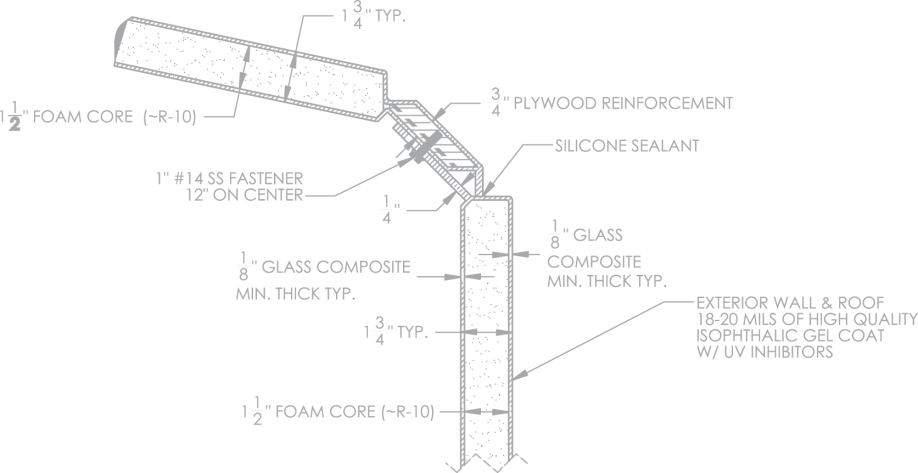Composites: The Key to Modern, Lasting Building And Construction
Composites: The Key to Modern, Lasting Building And Construction
Blog Article
Exploring the Uses and Advantages of Recycled Composites in Modern Industries
The combinations of recycled products with innovative composite innovations provides an encouraging method for enhancing sustainability, durability, and cost-efficiency throughout numerous sectors. As markets seek cutting-edge services to resolve ecological concerns and enhance operational efficiencies, the unification of recycled compounds arises as an engaging alternative.
Ecological Benefits of Recycled Compounds
The utilization of recycled compounds in modern sectors offers significant environmental advantages, adding to the reduction of waste and the conservation of natural resources. By incorporating recycled compounds right into manufacturing processes, industries can reduce their reliance on virgin products, thereby minimizing the quantity of waste generated and the energy needed for extraction and production. This change towards utilizing recycled compounds assists in drawing away products from landfills, easing the problem on waste administration systems, and lowering greenhouse gas exhausts connected with conventional manufacturing practices.
Additionally, using recycled compounds advertises the conservation of all-natural resources such as wood, minerals, and water, which are typically depleted through the extraction and handling of basic materials (composites). By extending the life-span of products via recycling, markets can help maintain ecological communities and biodiversity by lowering the demand for brand-new resources. Overall, the fostering of recycled composites in modern-day markets plays a critical function in advertising sustainability and alleviating the environmental influence of production procedures
Improved Resilience in Item Manufacturing
With an emphasis on durability and robustness, including recycled composites right into product production processes enhances toughness and sustainability. By utilizing recycled composites, suppliers can create items that are not only solid but likewise immune to wear and tear, making them optimal for lasting use in different sectors. The combination of various products in recycled composites can often lead to boosted stamina and resilience contrasted to typical materials, offering an economical option for producing lasting products.
Among the key benefits of using recycled composites in item production is the capacity to customize the product buildings to fulfill specific toughness demands. By readjusting the composition and manufacturing methods, suppliers can customize the recycled compounds to hold up against rough ecological conditions, heavy tons, or regular usage without jeopardizing on efficiency. This adaptability in design and production allows for the creation of highly resilient products that maintain their integrity over time, decreasing the need for frequent substitutes and ultimately contributing to a more lasting production procedure.
Cost-Effectiveness and Financial Benefits
Including recycled composites into item production not just boosts toughness and sustainability but also offers significant cost-effectiveness and economic advantages. Using recycled compounds can lead to reduced product prices as recycled products are frequently more economical than virgin products. Additionally, recycling composite materials can reduce garbage disposal expenditures internet and lower the need for landfill space, contributing to general expense savings for industries.

Innovation and Layout Adaptability With Recycled Composites
Utilizing recycled compounds in modern-day sectors uses exceptional possibilities for advancement and layout flexibility. By incorporating recycled materials into composite production processes, firms can push the limits of standard style restrictions and explore brand-new possibilities. The versatility of recycled composites permits the creation of complicated forms and structures that might not be attainable with conventional products.
Among the essential advantages of recycled composites is their capability to be molded into different types, providing designers the flexibility to experiment with distinct sizes and shapes. composites. This versatility opens a world of innovative opportunities, allowing the growth of lightweight yet durable products that satisfy the certain requirements of different sectors
Furthermore, the use of recycled compounds promotes lasting techniques and sustains the circular economic situation by minimizing waste and decreasing the ecological impact of producing processes. more information This concentrate on eco-friendly layout solutions lines up with the growing pattern in the direction of sustainability in modern-day industries, making recycled composites an important resource for forward-thinking and cutting-edge firms.
Applications Throughout Various Industries
Recycled composites discover diverse and impactful applications throughout a vast array of industries due to their special residential properties and sustainability advantages. In the vehicle field, these materials are progressively used for making sturdy and lightweight parts, enhancing gas efficiency and reducing carbon emissions. The aerospace industry benefits from recycled compounds in the manufacturing of airplane components, where the products' strength-to-weight ratio is important for making certain safety and security and efficiency. In building, these compounds are used for producing strong yet environment-friendly building materials, adding to sustainable infrastructure development. The sustainable energy industry employs recycled composites in wind this article turbine blades and photovoltaic panels, utilizing their toughness and resistance to rough ecological problems. Furthermore, the aquatic industry utilizes these materials for manufacturing boat hulls and components, using boosted toughness and deterioration resistance. The convenience and sustainability of recycled compounds make them important throughout various sectors, driving development and ecological stewardship. composites.
Conclusion
In final thought, the use of recycled compounds in contemporary markets supplies substantial environmental advantages, boosted longevity in product manufacturing, cost-effectiveness, and financial benefits. Additionally, making use of recycled composites enables for innovation and design adaptability across various markets. Overall, the fostering of recycled composites provides a lasting and functional remedy for satisfying the demands of the industry while likewise reducing ecological influence.

One of the key advantages of making use of recycled composites in item manufacturing is the capacity to tailor the material residential properties to meet certain durability needs. Utilizing recycled compounds can lead to lowered material expenses as recycled products are commonly much less pricey than virgin materials. The aerospace industry benefits from recycled composites in the production of airplane components, where the materials' strength-to-weight proportion is crucial for ensuring safety and performance.
Report this page